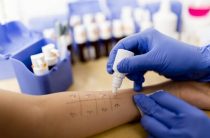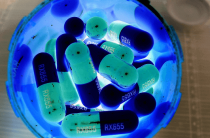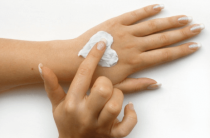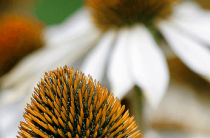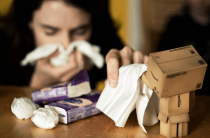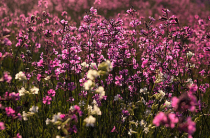With the advent of summer, the summer season comes, it's time for vacations and just outdoor activities. Everyone strives to get a golden or bronze tan to show off to each other. The sun is the only source of vitamin D in our body. No one doubts the benefits of the sun, but also no one thinks about its harm.
When exposed to direct sunlight, our skin risks getting a lot of burns. This fact brings a lot of trouble and rest can be considered spoiled.
Sun allergy symptoms
As a rule, allergic reactions of photodermatosis manifest themselves on the surface of the skin.
|
|
|
These symptoms may appear from the first minutes of exposure to the sun. But also a few hours later. If the body is too sensitive, then pressure drops and asthma attacks are possible. Sometimes there are cases of loss of consciousness.
Types of solar allergies
Each person has different reactions after exposure to sunlight. There are the following reactions:
| Phototraumatic reactions | This reaction is the most common manifestation of the body on prolonged exposure to ultraviolet radiation. Manifested in the form of burns. |
| Phototoxic reactions | Often occur as a result of the use of certain medications when interacting with the sun. Manifests itself in the form of edema, blisters. |
| Photoallergic reactions | These reactions are pathological. This means that the human immunity is weakened and reacts to the rays, as to an enemy agent. Shows itself in the form of severe burns, which are covered with crusts or turn into ulcerative forms. |
Causes of Allergy
People with a Celtic skin type are at risk. It is also necessary to be attentive to people who suffer from diseases of the endocrine system and impaired functioning of the kidneys and liver, or pancreas. The causes of photodermatitis can be varied. Phototoxic reactions can be caused by everyday items. Allergenic substances can be contained with conventional antibacterial soap. A lot of lotions, perfumes, deodorants provoke an allergy to the sun. Such components of some creams are quite dangerous:
|
|
|
An important role is played by heredity. If a person has a predisposition to allergies at the gene level, then sooner or later it will manifest itself. Hormonal changes often provoke the disease. Paradoxically, sunscreens can cause a reaction. Some of these agents include benzophenones and para-aminobenzoic acid, which are pathogenic. You should be careful with confectionery. For their manufacture, various additives and sweeteners are used that affect our body. Various household chemicals can become the causative agent of the disease. Many medicines are the culprits of the disease. These drugs include:
- Antibiotics: Ciprofloxacin, Levofloxacin, Sumamed, Macropen, Biseptol and others;
- oral contraceptives;
- Non-steroidal anti-inflammatory drugs;
- Some antihistamines;
- corticosteroids;
- Essential oils.
But, despite all this, you should not deprive yourself of sunbathing, because vitamin D deficiency in the body can be more detrimental than allergies. Such a shortage can cause visual impairment, bouts of depression, loss of appetite, provoke rickets, arthritis and osteoporosis. Photodermatitis affects people whose skin is covered with birthmarks or freckles. This disease also provokes a banal pregnancy.
Treatment of skin allergies from the sun
Proper diagnosis of the disease is required for proper treatment. You must first consult a doctor. It is the allergist who will help you establish the diagnosis, using a blood test and skin tests. Medications should be aimed at eliminating not only the external causes of allergies, but also internal ones. Do not self-medicate, so as not to aggravate your situation.
Often in such cases, antihistamines and ointments are prescribed. They will help to significantly reduce allergic manifestations. In the complex, it is necessary to use sorbents to remove toxins from the body. Therapy should begin with taking photodesensitizing agents. These include:
- beta carotene;
- Antioxidants (vitamin E and A);
- Quinoline drugs (antibacterial drugs);
- paraaminobenzoic acid.
Antihistamines
A prerequisite is the use of antihistamines - these are drugs that block the release of histamine and inhibit the action of the allergen. These funds have three generations. Each subsequent one is an improvement of the previous one. Popular first-generation antihistamines include:
| Diphenhydramine | Removes such allergic manifestations as urticaria, dermatitis, eczema, reduces itching. Due to its adverse reactions, it is forbidden to apply to pregnant women and children under 6 years of age. |
| Diazolin | Relieves symptoms of seasonal allergies, allergies to sunlight. Eliminates hives and itching. During pregnancy, you can use only as directed by the doctor. |
| Suprastin | Removes swelling of the skin, eliminates itching and burning of the skin. Not recommended during pregnancy and lactation. Children are allowed from 3 years old. |
| Diprazine | It is prescribed for the prevention of allergies and its complications. Reduces swelling of the skin. Contraindicated in people with abnormal liver or kidney function. Pregnant women are allowed from the second trimester on the recommendation of a doctor. |
| clemastine | Relieves symptoms of solar and seasonal allergies, prevents anaphylactic shock. Contraindicated during pregnancy and children under 6 years of age. |
| Hifenadine | Eliminates acute manifestations of urticaria, relieves severe itching of the skin. Good for allergic rhinitis. Prohibited for use in the first trimester of pregnancy and children under 6 years of age. |
This group of drugs has a lot of side effects. These include drowsiness, possibly a negative effect on the gastrointestinal tract and the cardiac system, visual impairment. These drugs have a short-term effect of action, can cause tachycardia. Contraindicated for people whose work is related to concentration. They are addictive with prolonged use.
The second generation drugs are more advanced than the previous ones. Rarely have a sedative effect. They do not affect the cardiovascular system. In some cases, it is allowed to use a longer time. Second-generation antihistamines are quite convenient to use, their use does not depend on food intake, and can be used for many other concomitant diseases. The effect after their application persists throughout the day. These include:
| Claridol | Effectively relieves urticaria and Quincke's edema. It has antipruritic and antiallergic effect. Prevents the formation of edema. Nausea may occur after taking the drug. Not recommended for use during pregnancy. |
| Claricens | Creates a barrier to the release of histamine. Eliminates the manifestations of dermatosis. Does not affect the nervous system. Does not cause muscle spasms. After its use, headaches are possible. |
| Lomilan | Relieves itching and swelling of tissues, acts from the first minutes after taking the drug. Adverse reactions rarely occur. There may be nausea and stomach pain. It is allowed for pregnant women from the second trimester as directed by a doctor. |
| Clarotadine | It works fairly quickly and for a long time. Removes hives, eliminates dry skin. When using this drug, drowsiness, anxiety, depression may occur. Possible violations of the endocrine system. Contraindicated in women during childbearing. |
| Claritin | It is prescribed for skin allergic manifestations. Works fast enough. Does not cause drowsiness and addiction. Headaches and nausea may occur. |
| Rupafin | It has no effect on the central nervous system. In a short time and effectively relieves skin manifestations of allergies such as urticaria, swelling, itching. It is allowed for pregnant women only under the strict supervision of a doctor. |
| Kestin | Fights chronic urticaria. It acts quickly and keeps the effect for two days. Adverse reactions include insomnia, nausea, and stomach pain. |
The most modernized and popular is the third generation of antihistamines. These agents have virtually no adverse reactions. Do not cause drowsiness and do not affect the central nervous and cardiac systems. They are not addictive, so you can use them for a long time. But it is worth noting that these funds are more expensive than the past. These include:
| Zyrtec | It is used for urticaria, skin itching, swelling of the skin. It also relieves the symptoms of hay fever. Acts as soon as possible. If the dosage of the drug is incorrect, dizziness and nausea may occur. |
| Telfast | It is prescribed to relieve Quincke's edema, relieves itching and burning of the skin. Does not affect various body systems. Headache and dizziness are rare. |
| Trexil | Eliminates the manifestation of allergic dermatitis. The action comes instantly. Safe to use for patients with chronic diseases. With an increased dosage of the drug, there may be problems with the gastrointestinal tract, headache, insomnia. |
| Hismanal | The action of the drug persists for several days. Does not affect the nervous system. Effectively relieves skin itching, hives, blisters. In rare cases, it can cause increased appetite, tachycardia and dry mouth. |
In the treatment of sun allergy in children, I use drugs from all three generations. It is often the first generation antihistamines that are used, since they act quickly and, just as quickly, are excreted from the body. But many parents are frightened by a fairly extensive list of adverse reactions. All the same, doctors prefer the second and third generation. The effect lasts longer, and side reactions are less. For children, the following drugs are recommended:
- Erius;
- Cetrin;
- Ketotifen;
- Fenistil.
Ointments and creams for sun allergies
In order to quickly remove allergic manifestations on the skin and cool it, thereby facilitating one's well-being, local ointments and creams are used. These drugs will help get rid of inflammation of the skin. Creams can be divided into antihistamine hormonal, antihistamine non-hormonal, anti-inflammatory, moisturizing and softening.
Most often, after identifying photodermatitis, doctors prescribe non-hormonal antihistamine ointments and creams. The advantage is given to non-hormonal ointments. They can even be used by babies. Such drugs have practically no adverse reactions and contraindications. They can be used on any part of the body.
| Fenistil | Relieves pain from burns, cools the skin, relieves itching. Promotes healing of wounds. Available in the form of a gel. Allowed for children from birth. It is not contraindicated during pregnancy. After using the drug, avoid contact with the sun. |
| Bepanthen | Promotes skin regeneration, heals burns, relieves urticaria and itching. Combats dry skin. It is produced in the form of ointment and cream. Often this remedy is used to care for babies and to prevent allergic manifestations in children. |
| Skin Cap | It is an antibacterial drug. Used for allergic dermatitis and dry skin. Has an anti-inflammatory effect. In the treatment of children should be used from one year of age. |
| Elidel | It is often prescribed for acute manifestations of allergies on the skin. Removes her puffiness. It has an anti-inflammatory effect. Allowed for children from three years old. This remedy should be used with caution. Especially children and pregnant women. After its application, exposure to the sun is prohibited. |
| Gistan | The product contains only natural ingredients. Effectively relieves inflammation and itching of the skin. Improves the patient's condition. Removes rashes in the form of blisters. Contraindicated in case of individual intolerance to certain components. |
| La Cree | In most cases, it is prescribed for children. The cream has antipruritic properties. Relieves inflammation and promotes healing of ulcers. |
| Desitin | The ointment has an anti-inflammatory effect and effectively relieves irritation and ulcerative formations of surfaces. |
Hormonal ointments are used less frequently, due to their hormonal basis. They are prescribed in case of unsatisfactory effect from the use of other means. They are rarely used in the treatment of children, since a small amount of hormones is absorbed through the skin into the bloodstream and can affect the functioning of the endocrine system. Also, they are contraindicated in women during childbearing and breastfeeding. Hormonal drugs should be used only on the recommendation of your doctor. Corticosteroids are quite effective, but it is recommended to use only the latest generation of drugs. These include:
| Elocom |
|
| Advantan |
|
| Flucinar |
|
Moisturizing ointments and creams will be effective in dehydration of the skin, which occurs due to exposure to sunlight. Such an allergic reaction is manifested in dryness and peeling of the integument. Various baby creams with celandine or chamomile, Johnsons Baby and Bubchen series products have a good moisturizing effect. Suitable for any creams with a greasy base.
Sun Allergy Prevention
Any disease is always easier to prevent than to treat. Therefore, it is worth following some precautions. Limit your exposure to direct sunlight to 20 minutes. Be sure to apply protective creams and lotions before going outside, letting them soak for 15-20 minutes. It is better to choose clothes in light colors. A wide-brimmed hat will not become superfluous in your wardrobe.
Therefore, it is worth following some precautions. Limit your exposure to direct sunlight to 20 minutes. Be sure to apply protective creams and lotions before going outside, letting them soak for 15-20 minutes. It is better to choose clothes in light colors. A wide-brimmed hat will not become superfluous in your wardrobe.
Try to leave the sun at 11 o'clock in the afternoon and go out on it only after 16:00. These will protect you from the harmful effects of ultraviolet radiation. It is better to sunbathe in the shade, and when leaving the water, be sure to blot the skin with a towel, do not leave drops on it. You can not use decorative cosmetics and perfumes if you have planned a holiday under the sun. Some of their components contribute to the manifestation of various allergic reactions. The use of certain juices can also provoke the disease.
Purified water without gas will help you quickly remove allergens from the body. While under the sun, you need to drink 150-200 ml every half hour. Eat as many antioxidant foods as possible. These include pomegranate, blueberries, currants, cocoa, green tea. Avoid exposure to the sun while you are on antibiotics or oral contraceptives.
